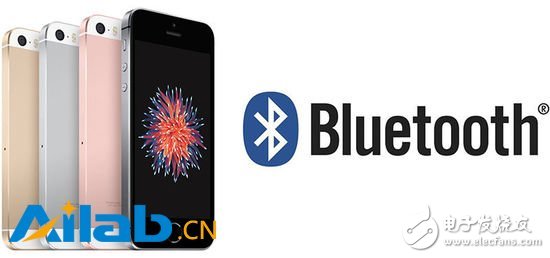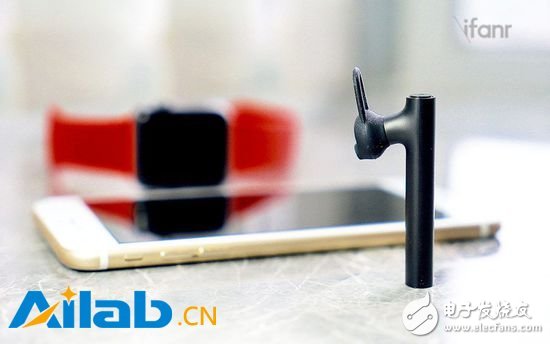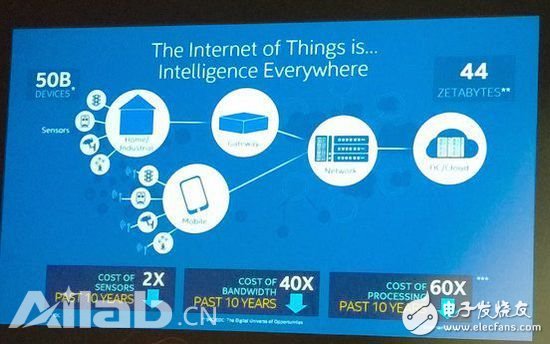Bluetooth technology has become another focus of the Internet of Things
Intel, Qualcomm, LG, Nokia and other manufacturers have already shown their skills in various exhibitions in the first half of 2016. However, these giants have no longer emphasized running points and speeds this year, but they are more concerned about "connections". Above.
Without it, the mobile phone boom has declined, and the Internet of Thing (IoT) has become another new hotspot in the tech world.
However, when the giants rushed to develop the Internet of Things, many people forgot the guy who was supposed to be spicy on the Internet of Things: Bluetooth. The Bluetooth Technology Alliance (SIG) has quietly announced that the next-generation Bluetooth standard will be released on June 16, 2016.
Smartphone key to the outside worldBluetooth, the new short-range wireless technology, was developed in 1994 by Ericsson of Sweden; it has a higher transmission speed than the popular infrared technology (IrDA), and does not need to be like infrared (IrDA). In this way, the Bluetooth interface is connected to the interface, and all Bluetooth devices can be connected at any time as long as they are used within the effective communication range.
When Wi-Fi and 3G rushed to the Internet, Bluetooth technology silently focused on the interconnection between computers, wireless mice, wireless headsets, wireless keyboards and other devices. In 2010 or before, Bluetooth became the inevitable feature of most commercially available computers and mobile phones, but the power consumption of Bluetooth has not been significantly improved. Many people's Bluetooth 3.0 devices have been closed for a long time, resulting in the use of Bluetooth. Due to severe restrictions, its development has not been taken seriously.

Until 2010, Bluetooth introduced the 4.0 version of Bluetooth Low-energy (BLE), which can stand on the mobile device with low power consumption, so that it can be connected for a long time; it does not need to be like Wi -Fi consumes a lot of power, does not require a lot of data like 3G, and can be connected to external devices at any time. Therefore, with the introduction of Bluetooth 4.0 in the iPhone 4S in 2011, the mobile phone at that time was introduced to introduce low-power Bluetooth, and the key to connect the smart phone with other devices was mastered.
We have pointed out earlier:
Perhaps new technology will make smartphones less important, but any company that wants to quickly promote a new generation of products must borrow smart phones. Just look at Samsung's new range of smart devices to be laid out on the iPhone, knowing that smartphones still hold the tickets for the next-generation smart products market. Without a smartphone, VR may be more difficult to popularize, and wearable devices will have to wait for the monkey to mature.
And Bluetooth has successfully opened the door to the Internet of Things in the post-PC era through the influence of smartphones.
Bluetooth history of the Internet of ThingsAs Bluetooth has mastered the entry of smart phones and external devices, when the wearable device market began to rise, it became the transmission center of new smart devices. In 2012, Pebble launched the first smart watch, and later Fitbit also launched Fitbit One. These new computing devices rely on Bluetooth 4.0 for data transmission. Then in 2013, Google launched Google Glass, which must rely on Bluetooth to realize most of the smart glasses. Function. In 2014, Apple introduced iOS 8 and Mac OSX 10.10 Yosemite, in which the core functions "ConTInuity" and "Handoff" for enhancing iPhone, iPad and Mac connectivity were implemented in Bluetooth 4.0, making Bluetooth important in today's smart devices. Sexually pushed to a new height.

Therefore, in addition to the previous keyboards, mice, headphones, speakers, joysticks and other small accessories, Bluetooth has further expanded the application scenarios with the use of smart phones, including August Bluetooth door locks, Tencent Lubao car detection, Millet balance car remote control, etc.
In 2013, Apple announced the release of the iBeacon protocol based on Bluetooth 4.0 technology. In the absence of GPS, we can locate indoors via Bluetooth. The iBeacon base station can determine the approximate location of the object through the relative position of the smart phone, and can enable the mobile phone to receive notifications of nearby sales, or allow the consumer to sell without using a wallet or credit card. Click to complete the payment.
Therefore, there has been news that Apple will adopt iBeacon as the key technology for its own mobile payment and give it a "Near Field Communication" (NFC) attack, but with the launch of Apple's NFC-based Apple in 2014. Pay, Bluetooth's beautiful blueprint for indoor positioning and mobile payments, suddenly suffered setbacks.
Internet of Things Internet CounterattackWith the development of the mobile intercom market, the giants who are committed to Internet communication technologies, including Qualcomm, Intel and LG, began to change direction in 2015 and vigorously develop the Internet of Things.
Although Bluetooth has mastered the access point of smartphones, the Internet has mastered the entrances and exits of the world. Moreover, Wi-Fi and 5G technologies have tremendous speed and distance advantages, can carry more complex functions, and have a greater advantage than Bluetooth on non-mobile devices.
Their first impact on the Internet of Things is smart home: with the original Wi-Fi surveillance lens and Philips' Hue smart light bulb, to the next Nest thermostat, and even the Echo smart butler from Amazon, the Internet invaded from the "home" The world of the Internet of Things.
Raj Talluri, senior vice president of product management at Qualcomm, once said:
Need to redefine everything, mobile phones, computers, everything in life, cameras, watches, cars, home, medical, these can become connected devices. Now at such an opportunity, we are not talking about a device, we are talking about everything.
As long as the home device is always online, any smart device can perform complex large-flow monitoring in any place. We can monitor the lens through Wi-Fi and visit the baby in the office. When you go out shopping, you can also monitor the food reserve in your home through the mobile network, and let you decide whether or not to replenish the beverage.

That's what Intel is advocating at IDF: "The cloud of people and the cloud of things, the people take over the clouds to everything."
If Bluetooth is the center of the Internet of Things, we communicate with the devices around us through the mobile phone. Intel, Qualcomm and other initiatives that "everything is connected to the cloud" is to regard the Internet as the center of the Internet of Things. Like a computer device, it is just a client role.
Bluetooth 5 on the relayIn the past few days, members of the official alliance of the Bluetooth Technology Alliance (SIG) have issued a notice confirming that the next-generation Bluetooth standard will be officially released in London on 6/16; and Bluetooth will also deprecate the previous "5.x" version. The name, which is the official name, is Bluetooth 5, and there will be no Bluetooth 5.1 name in the future.
However, Bluetooth 5 is not a new technology. It has been in the technology industry last year. Compared with Bluetooth 4.0, Bluetooth 5 has 4 times the transmission distance and 2 times the transmission speed, but for the "Internet of Things". Wi-Fi and 5G technology are simply not the same. In fact, the key to the new standard may be to achieve positioning within 1 meter of accuracy. The key to the future development of Bluetooth may be to continue to develop the indoor positioning function that has been aborted in the early years.
Another advantage of Bluetooth 5 is that the industry is still fighting for the 5G standard, and WiFi Halow products may wait until 2018 to appear. Bluetooth 5 can set standards early, and can also seize the market to consumers. For example, neither Bluetooth nor Wi-Fi is important, and there is always better choice than no choice; but for manufacturers, the inability to unify the IoT specifications will increase their cost, which also makes things The development of networking has been limited.
In addition to Bluetooth and Wi-Fi, ZigBee, Z-wave, and Thread IoT specifications are also in the blink of an eye; the development of the Bluetooth 5 standard will be the beginning of a new IoT melee.
Special equipment for university physics laboratory
Teaching Equipment,Optical Bench Kit,Optical Instruments In Physics,Electrooptical Modulator Experimental Instrument
Yuheng Optics Co., Ltd.(Changchun) , https://www.yhenoptics.com